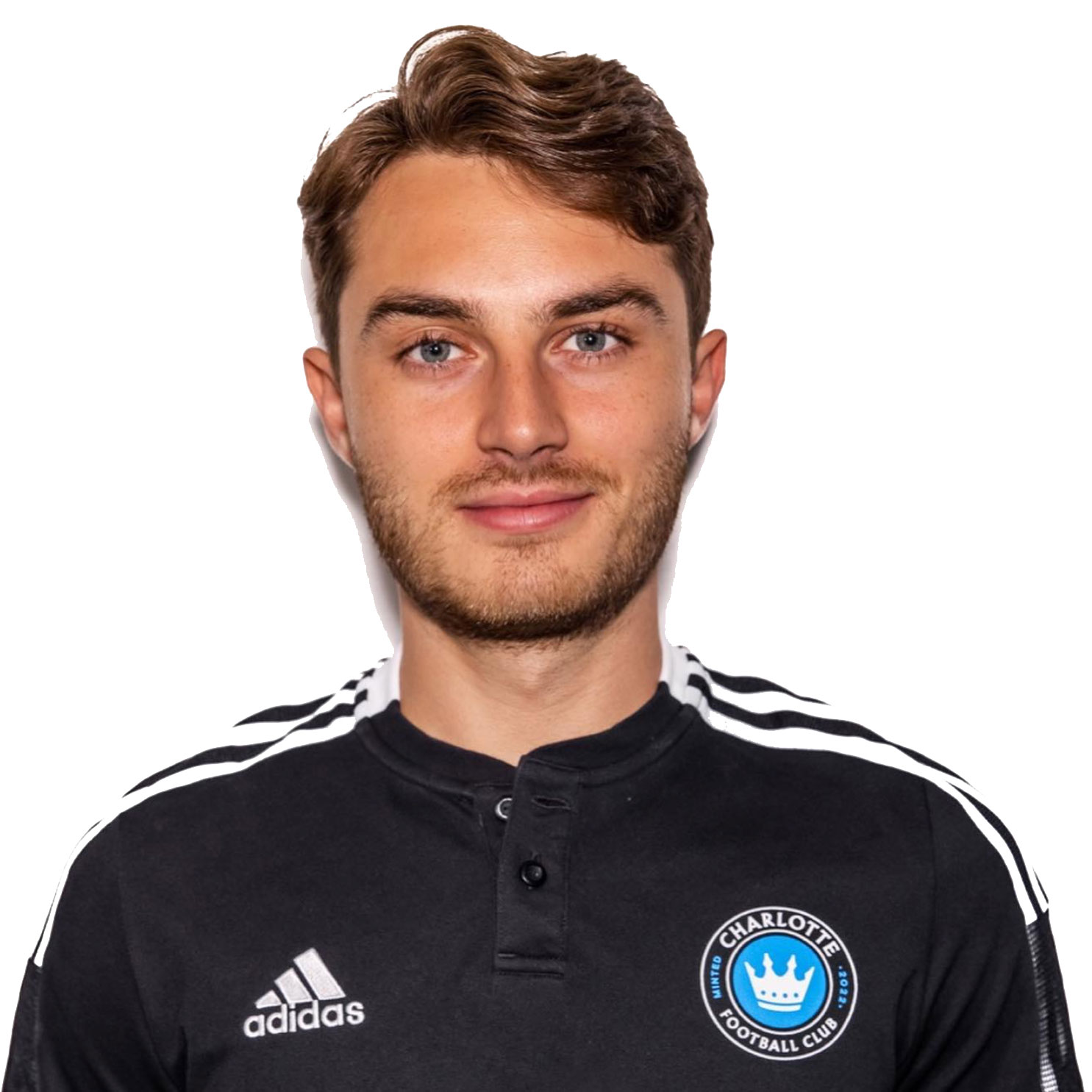Miguel Ramírez has been making echoing waves throughout South America in the past two years. He is hailed by many as one of the most exciting, innovative young coaches coming out of South America. No, not because he resembles Manchester City coach Pep Guardiola and plays a similar brand of soccer. While he understands the comparison, Ramírez stresses that his own experience and time with mentors have shaped his footballing philosophy today.
“The inspiration has come from the people I’ve had around me — people who have helped to build me up, offered me an idea about how to go about being a coach,” Ramirezez told The Athletic in December.
Ramírez’s soccer inspiration and philosophy are the epitome of what you think about modern football. It’s bold, keeps-you-on-the-edge-of-your-seat, attacking soccer that focuses on keeping possession and regaining it as soon as possible when lost. It’s a high-risk, high-reward style that looks to overwhelm opponents on both ends of the pitch.
When asked how he would describe his playing philosophy in one sentence, Ramirez said, “I want to be the protagonist on offense and defense.”
On offense, Ramirez’s teams look to overwhelm by creating overloads by outnumbering opposing defending players. On defense, the team looks to pressure the ball with double or even triple teams. This all sounds appealing, but at the end of the day, no matter how beautiful the game is, you need to win.
In his first year as a senior team head coach for Ecuadorian side Independiente del Valle, he made history leading the club to their first-ever trophy at the Copa Sudamericana (equivalent to the Europa League). Despite Independiente competing against much richer South American sides, Ramírez’s side didn’t back down and stuck with their daring soccer to go on and win it all. Making this victory even more impressive was that four of the players who started in the Sudamericana final against Colon were Independiente academy products. Integration of youth was a key part of Ramírez’s success on the pitch in his time in Ecuador.
“His style of play is recognizable, with a possession-based approach, attacking and entertaining. We are looking forward to seeing him leading a very dynamic team at Charlotte FC,” said Charlotte FC Sporting Director Zoran Krneta.
Charlotte FC fans will enjoy many of the tactics from the new head coach.
Offense
Ramírez is a flexible, adaptable coach that doesn’t have a set-in-stone formation. He very much adjusts tactics according to the league he is in or the opponent he is playing. Nevertheless, he has consistent principles he instills in his tactics that we can learn in how he set up Independiente during his successful time there.
Ramírez has been adamant on the importance he puts on maintaining possession of the ball, “Football, for me, is a possession game,” Ramírez told The Athletic, “But not in some superficial way. Having control of the game means having the ball. That’s the foundation on which I can build everything else.”
At Independiente, most games he would start the team in a 4-3-3. He liked to employ a midfield three consisting of a defensive midfielder, commonly known as a #6, along with dual box-to-box midfielders known as #8’s. In addition, he used versatile strikers and wide wingers but not so traditional fullbacks.
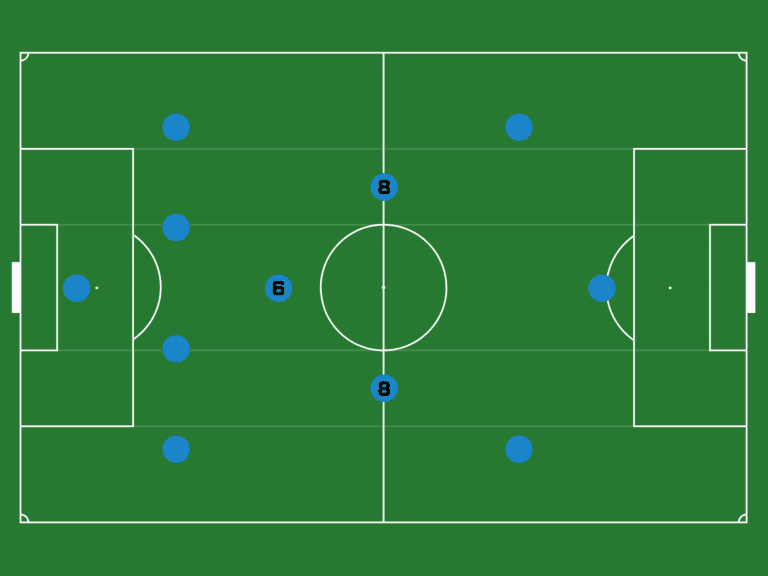
Once in possession of the ball, this 4-3-3 began to morph into a shape similar to the 3-4-3 formation. The #6 dropped back in-between the center-backs, the fullbacks moved narrower acting as midfielders (commonly known as inverted fullbacks), the dual #8s looked to receive the ball, while the wingers stayed close to the sideline and high up the pitch to provide the width and drag defenders back. Even the goalkeeper got involved in possession — he pushed up to provide another passing outlet. This created as many passing triangles between the players as possible.
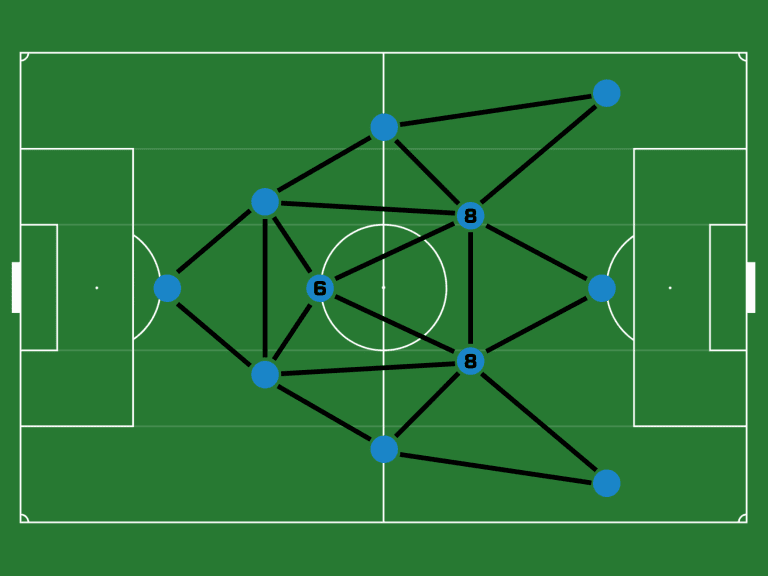
But why are these passing triangles important? Well, have you heard the saying “running circles around them?” It’s sort of a similar concept to that, but instead in soccer it goes more like “passing triangles around them.” These triangles provide a passing outlet at any point in the game for every player. Ramírez wants his players to combine quick, short passes on the ground to each other in order to disrupt the opponent’s defensive shape. Creating these triangles always gives players at least two passing options regardless of where they are on the pitch.
Ramírez pushes the entire team forward when attacking to outnumber and overwhelm the opponent’s defense. He encourages his players to not be afraid to take on opposing players because it attracts defenders, opening pockets up that the team can exploit to score goals. This is not limited to the attacking positions such attacking midfielders, wingers, and strikers — every single player on the pitch is involved in the attacking sequences under Ramírez.
When that inevitable moment comes when you lose the ball, the defensive security becomes the concern when pushing so many numbers forward. Which leads us to Ramírez’s defensive philosophy.
Defense
“When I don’t have the ball, I want to win it back, and I want to do that as soon as possible so I can keep attacking,” said Ramírez about defense.
When Ramírez’s team loses the ball, he wants them to regain possession as quickly as possible. In soccer terms, this is called a counter-press. A counter-press is an aggressive but organized team press that occurs immediately after losing the ball.
Immediately when losing the ball, the player closest to the loss of possession will pressure the opposing player with the ball (white circle). At the same time, the second closest player who is on the opposing player’s blindside will also pressure the ball initiating a double team (red arrows). The reason why the blindside player presses is because, well, the opposing player will be blind to it and therefore not expect it.
The point of this is to force the opposing player to make a mistake by pressuring him to rush his pass and not allow the other team to connect passes. If the opposing player doesn’t pass off the ball quick enough, they will be swarmed by two or three players and dispossessed. At the same time this happens, the rest of Ramírez’s team will step up to block the passing lanes to available to the opposing player with the ball (red ovals).
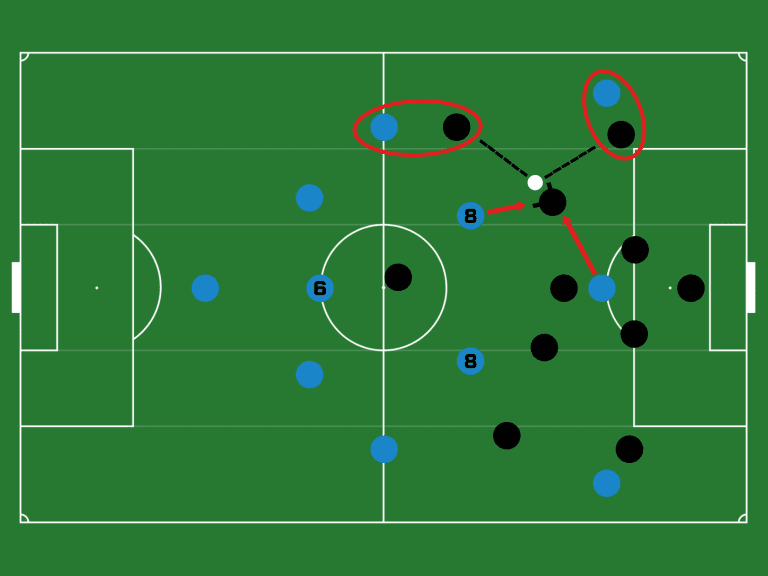
The team’s focal point on defensive, like on the offensive side, is always the ball. If the ball gets switched to the other side, the entire defensive structure will shift over to that side of the ball and face it. The team is set up in what is called a high press, which means that the defenders can be pressing as far up as the half-way line. When Ramírez’s team stops the counter and then settles into their defensive shape, the aggression and pressure doesn’t stop there.
Whenever an opposing player receives a pass, it’s a trigger for the player closest to him to pressure him immediately while others block the passing lanes but still retain their defensive shape. These aggressive defensive triggers occur throughout the entire defensive phase until the ball is won back. Even on defense Ramírez’s side is aggressive and fearless as they are on offense.
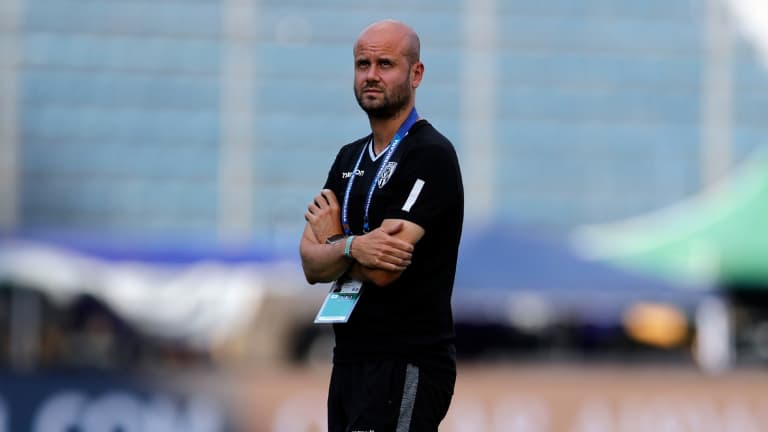
The native of Las Palmas, Spain, will be arriving at a league that poses its own unique challenges that both players and coaches need to adapt to. While MLS will be a new challenge for Ramírez, a tremendous advantage will be that his philosophy, values and style of play align with the club’s vision and ambition. In addition, Ramírez has traveled all over the world in his journey as a coach and those experiences have helped him to easily adapt to changes on and off the pitch. Experiences that will prove to be invaluable in navigating a new league, new team, and new city.
Charlotte FC Sporting Director, Zoran Krneta, has been transparent on what the club has been looking for in their first ever coach. Ramírez checks all the boxes. Attractive, attacking soccer fans will enjoy? Check. Nurturing youth talent to bring all the way through the Charlotte Academy and into the first team? Check. Can do more with less? Check. Hungry, competitive coach who is all in on the Charlotte FC project? Check.
“Miguel is a bright, modern, young, successful coach that can only go upward. This is a match made in heaven,” added Krneta.
Miguel Ramírez is making history again by being Charlotte FC’s first-ever head coach. His goal in the Queen City is to play the most entertaining, unique brand of soccer in MLS, win domestic trophies, and eventually compete in the Concacaf Champions League, the elite club competition in the region.

